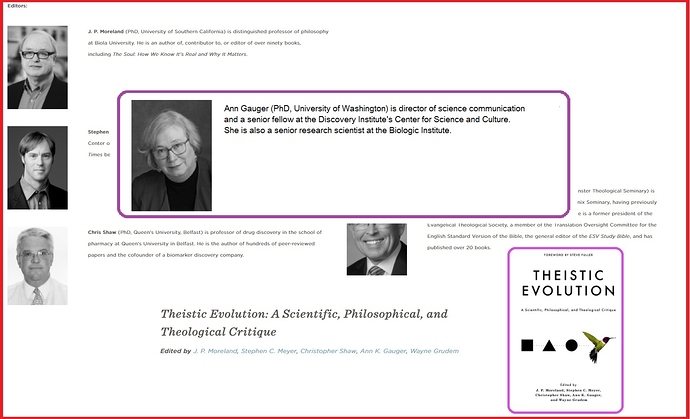@agauger, that’s ironic.
Because I get a vague vibe from you that you are more interested in contradicting Evolutionists than you are in contradicting Young Earth Creationists.
If you go to this post,
you will probably notice that you are one of the chief editors of a book that totally trashes Christian Evolutionists.
Why is it that we don’t find in your Editorial contribution anything about how impossible it is for human genetic diversity as we see it today to be compatible with any Creationist scenario that includes the specification that the Earth cannot be much older than 6000 years?
You seem to be grooming a logical fallacy – that since Evolutionists are not measuring the age of the Earth when they calculate the amount of time it took for humans to evolve - - then you don’t have to worry about the Earth’s age in Creationist scenarios.
That kind of logic doesn’t work in both directions. The time it takes for humans to evolve is the minimum age of the Earth - not the maximum. So if Creationists insist that the Earth cannot be older than 6000 years (more or less), it means, ipso facto, that their belief in the origin of humanity starting no more than 6000 years ago is wrong as well.
And the correct analysis that you should be offering your Creationist colleagues is: If Human Genetic Diversity suggests a time period of 1,000,000 years (just a hypothetical number for the purpose of this thread), then Creationists are honor-bound (by their pursuit of what is Truth) to adjust their analysis of Genesis to be consistent with a 1 million year time frame, not a 6000 year time frame.
If you were to have written something like that in the book … think how well known you would be by now! You could probably walk into any Foundation and get a grant to further any part of your ongoing research!
@Swamidass, or @cwhenderson, do you think my analysis is on the right track? Am I way off base? Or do you think I’m giving a fairly reasonable assessment to our colleague, @agauger?
